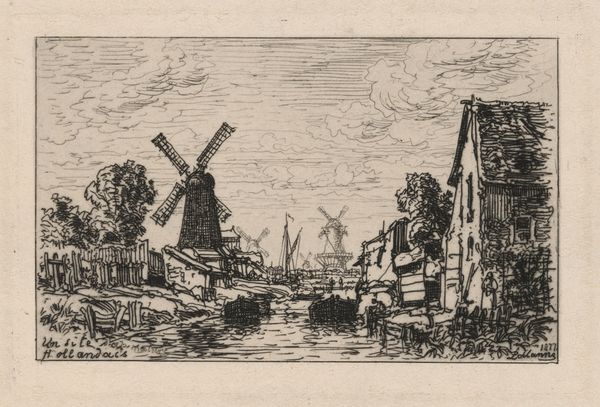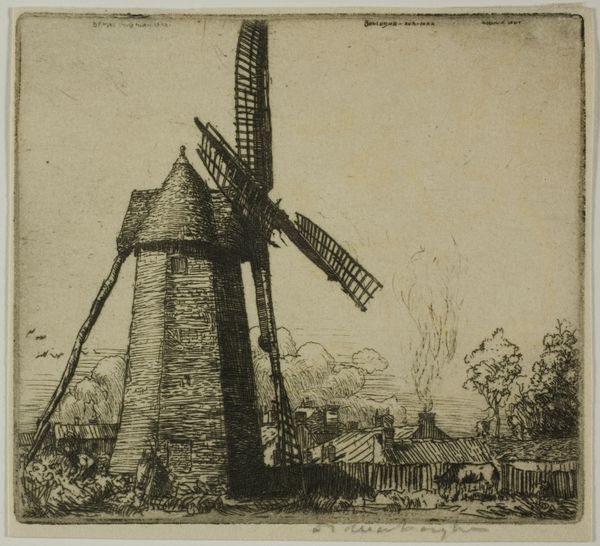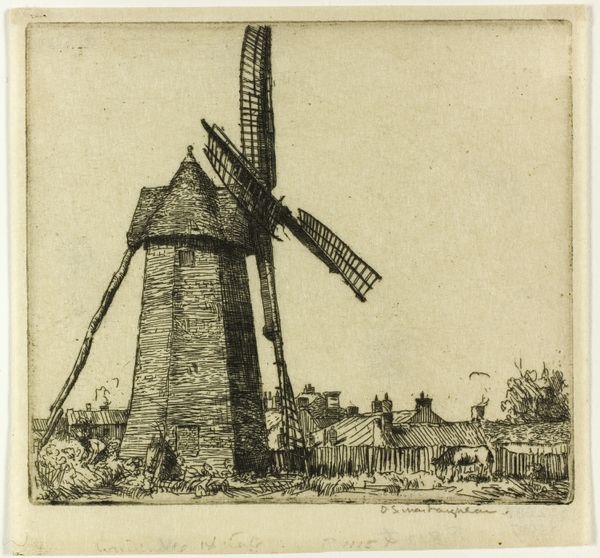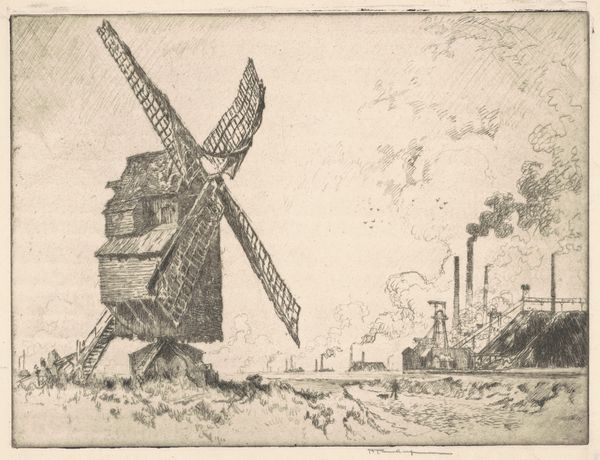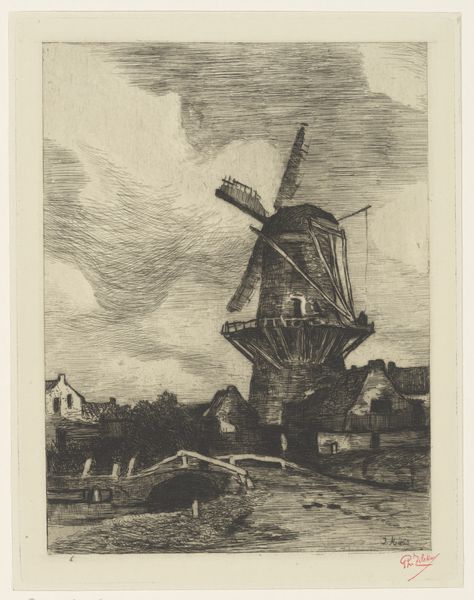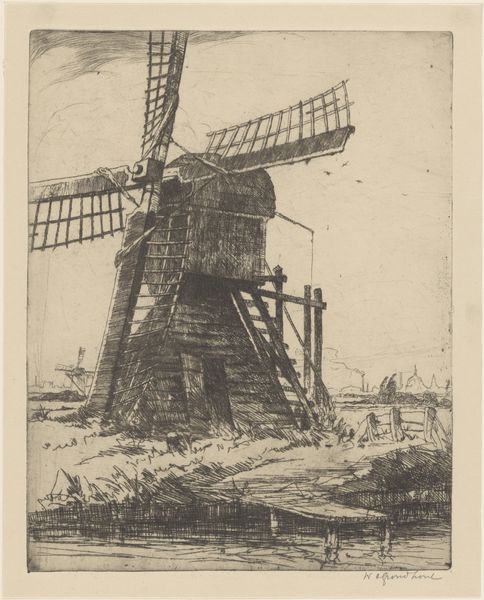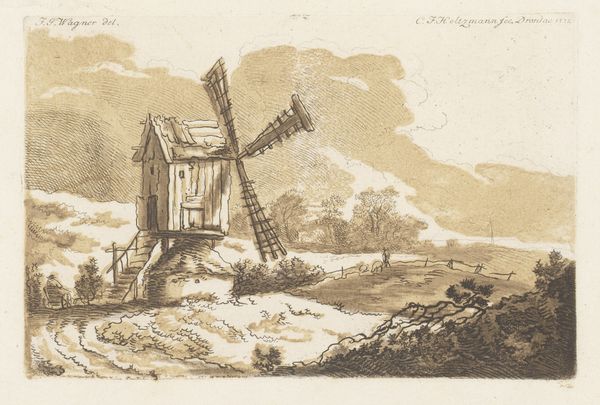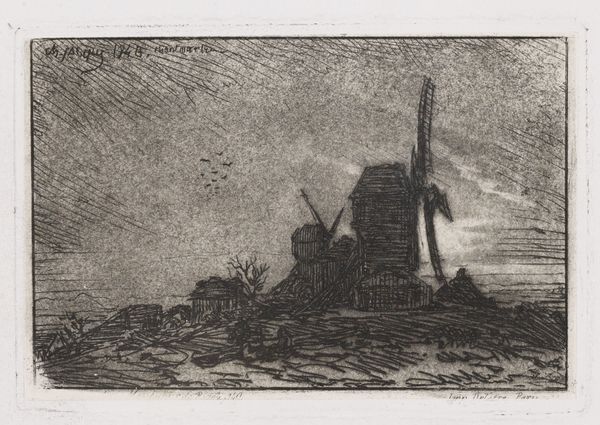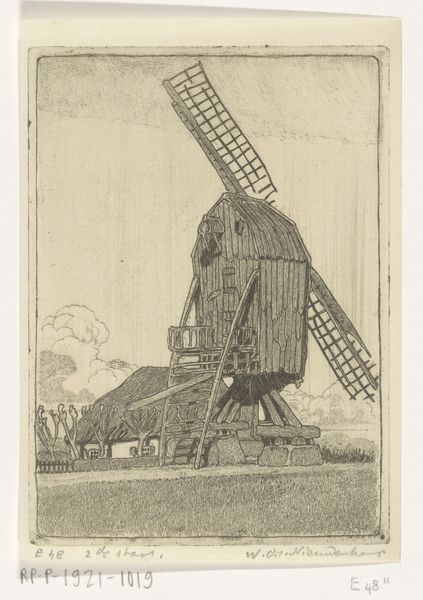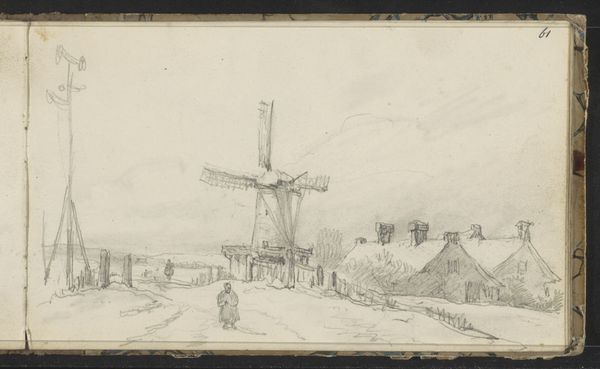
Dimensions: 88 × 99 mm (image/plate); 94 × 104 mm (sheet)
Copyright: Public Domain
Curator: Donald Shaw MacLaughlan's etching, "The Windmill," created in 1902, offers a captivating example of Impressionist printmaking. Editor: Immediately, the texture grabs me. It feels…almost violently atmospheric. The sky’s about to crack open. I can smell the rain from here. Curator: The density of the etched lines certainly contributes to that sensation. Note how MacLaughlan uses varied hatching to create a sense of depth and movement, especially in the sky. The heavy, vertical lines suggest a downpour, obscuring the details of the landscape. Editor: Right! And against that fury, the windmill itself feels stoic, almost defiant. Solid geometry against impending chaos. Maybe that's a metaphor for something… Or maybe it's just a really cool windmill in a really nasty storm. Curator: Perhaps. From a formalist perspective, consider how the windmill anchors the composition, acting as a vertical counterpoint to the horizontal lines of the land and the dynamic, diagonal strokes representing the rain. The contrast between the geometric precision of the structure and the fluidity of the natural elements is striking. Editor: It’s making me think about human endeavor against nature's brute force. But there's also something cozy about those little houses huddled at the bottom, bravely facing the elements together with the mill. You get a real sense of the quiet fortitude of the people that populate these sceneries. I wonder who lived there then? Did MacLaughlan meet them? Curator: One could indeed weave sociopolitical narratives or simply value the expressive manipulation of line and tone, as an exercise in pictorial design. Regardless, it remains a masterclass in understated drama. Editor: A tiny storm in a teacup then. Maybe a reminder of our shared vulnerabilities, and the little, strong communities we can find everywhere to protect ourselves against it. Curator: Indeed. MacLaughlan’s “The Windmill” stands as a testament to the expressive potential of etching and the enduring appeal of landscape as a vehicle for exploring form and emotion.
Comments
No comments
Be the first to comment and join the conversation on the ultimate creative platform.
